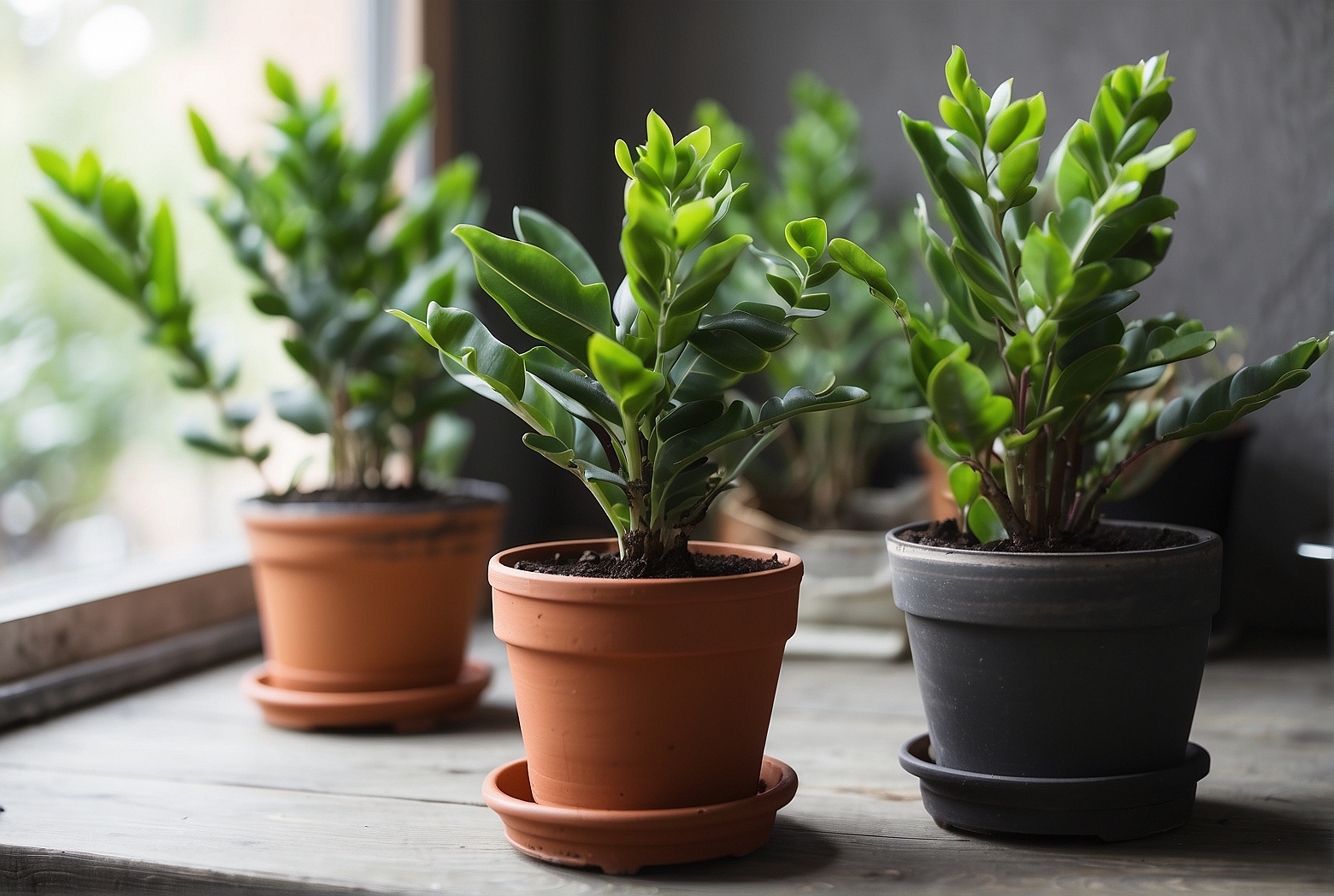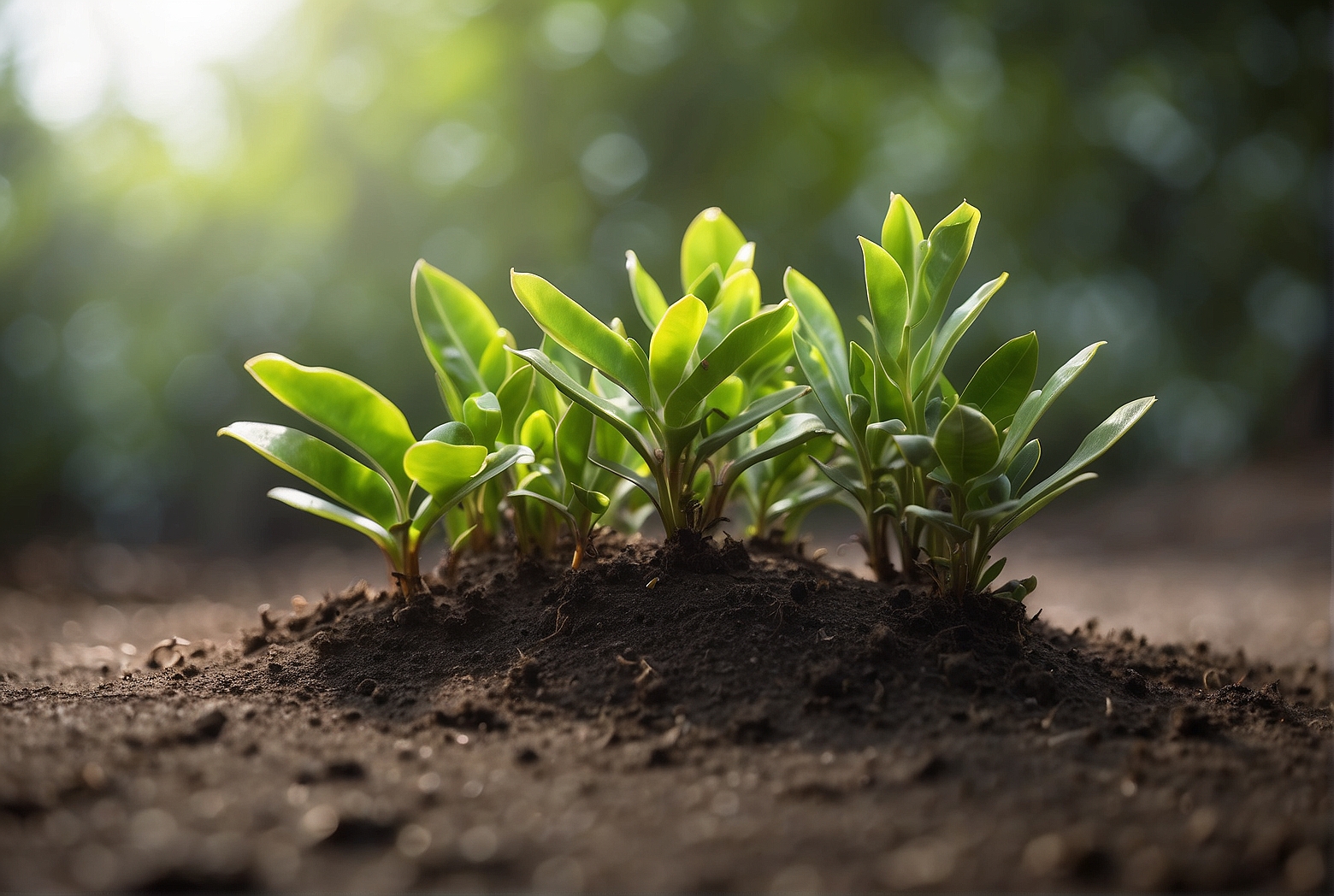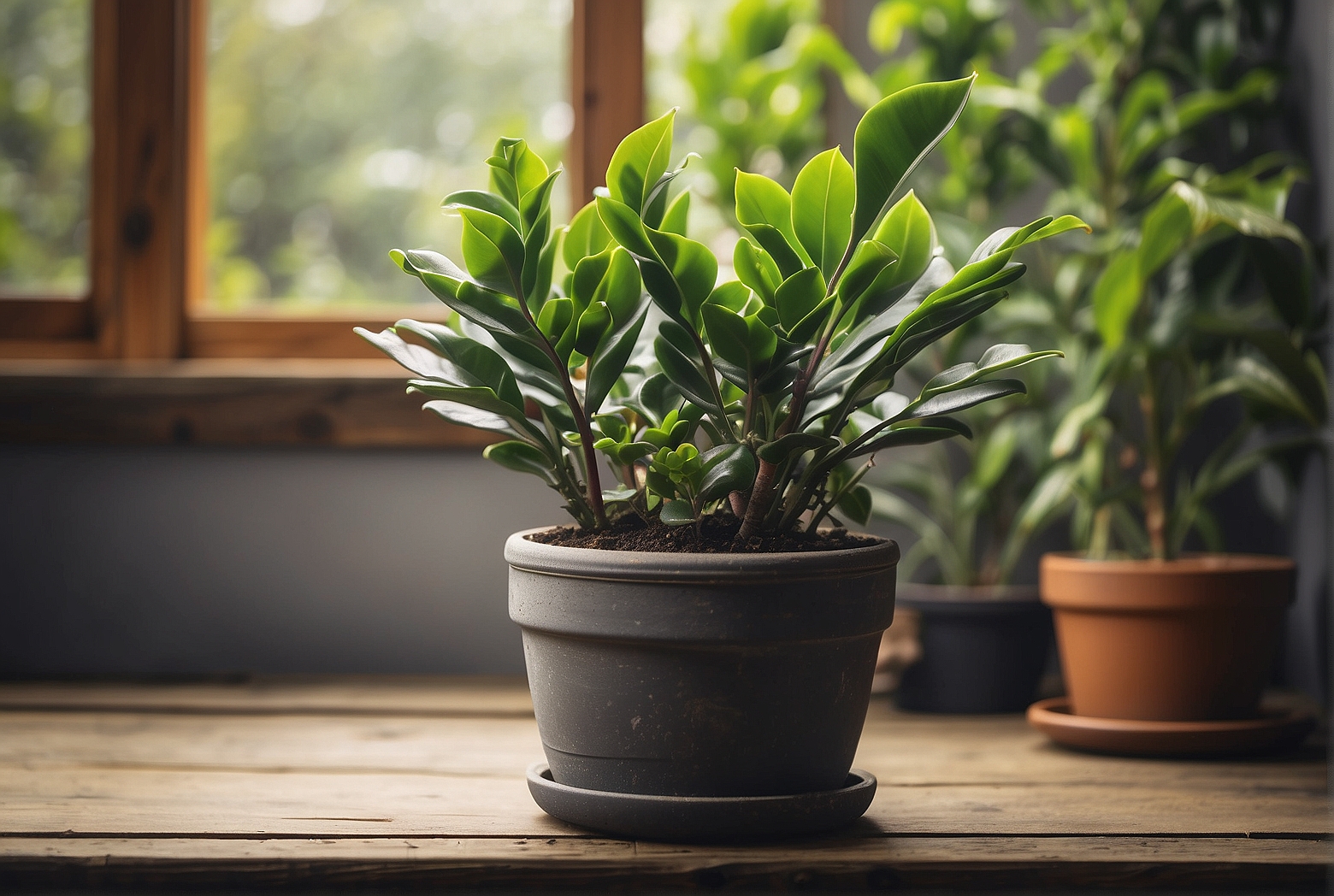Last Updated on April 5, 2024 by Tony Manhart
You love your ZZ plant and want to see it thrive and grow at a faster pace. If you’re wondering how fast ZZ plants grow and how to accelerate their growth, look no further. In this article, we’ll uncover some tips and tricks to help you speed up your ZZ plant’s growth naturally, ensuring that it flourishes and adds a touch of green to your living space. So, get ready to unlock the secrets of boosting your ZZ plant’s growth and enjoy watching it thrive before your very eyes.
Provide Adequate Light
Choose a Bright Location
To ensure optimal growth for your ZZ plant, it is important to choose a bright location in your home. ZZ plants thrive in bright indirect light, so find a spot where they can receive plenty of natural light. This could be near a sunny window or in a room with good natural light throughout the day.
Avoid Direct Sunlight
While ZZ plants need bright light, it’s important to avoid direct sunlight. The intense rays of the sun can scorch the leaves of the ZZ plant, causing damage and hindering its growth. Place your ZZ plant a few feet away from the window or use sheer curtains to filter the sunlight if direct exposure is unavoidable.
Consider Artificial Lighting
If you don’t have access to enough natural light for your ZZ plant, you can consider supplementing with artificial lighting. LED grow lights are a great option as they provide a similar spectrum of light to natural sunlight. Position the lights a few inches above the plant, ensuring they are on for 10 to 12 hours a day. This will give your ZZ plant the light it needs to grow and thrive.

Maintain Optimal Temperature
Keep ZZ Plant in a Warm Environment
ZZ plants prefer warm temperatures, ideally between 65°F (18°C) and 75°F (24°C). Avoid placing your ZZ plant in areas with temperatures below 50°F (10°C) as this can stunt its growth and cause damage to the foliage.
Avoid Extreme Temperature Fluctuations
While ZZ plants can tolerate some temperature fluctuations, it is best to avoid extremes. Rapid changes in temperature can stress the plant and negatively impact its growth. Keep your ZZ plant away from drafts and areas with fluctuating temperatures, such as near heaters or air conditioning vents. Maintaining a stable temperature will promote healthy growth and overall well-being for your plant.
Water Correctly
Allow the Topsoil to Dry Between Waterings
When it comes to watering your ZZ plant, it is important to allow the topsoil to dry out between waterings. Overwatering can lead to root rot and other issues, so it’s best to check the moisture level before reaching for the watering can. Insert your finger about an inch into the soil – if it feels dry, it’s time to water your ZZ plant. This watering technique helps prevent waterlogged soil, ensuring a healthy root system and promoting growth.
Do Not Overwater the Plant
ZZ plants are drought-tolerant and can survive short periods without water. It’s crucial not to overwater your ZZ plant as it can lead to root rot and, ultimately, the demise of your plant. Only water when the soil has dried out, and make sure to avoid standing water in the pot. Remember, it’s better to underwater than to overwater a ZZ plant.

Provide Sufficient Drainage
To prevent water from pooling in the pot and potentially causing root rot, it is essential to provide sufficient drainage for your ZZ plant. Use a pot with drainage holes and place a saucer or tray beneath it to catch excess water. This allows the water to flow freely through the soil and prevents it from becoming waterlogged. Good drainage helps to maintain the health of the plant, promoting growth and preventing root-related issues.
Feed with Fertilizer
Use a Balanced Water-Soluble Fertilizer
To support the growth of your ZZ plant, feeding it with a balanced water-soluble fertilizer can be beneficial. Look for a fertilizer that is specifically formulated for houseplants or foliage plants. Dilute the fertilizer according to the package instructions and use it to water your ZZ plant every two to four weeks during the growing season. This will provide the necessary nutrients to support healthy growth and vibrant foliage.
Apply Fertilizer at Regular Intervals
Consistency is key when it comes to fertilizing your ZZ plant. Applying fertilizer at regular intervals ensures a steady supply of nutrients for the plant without overwhelming it. During the active growing season, which typically spans from spring to summer, fertilize your ZZ plant every two to four weeks. As the plant growth slows down in the fall and winter, reduce the frequency to once every two months. By following this schedule, you’ll provide the right amount of nutrients to support optimal growth.
Follow Recommended Fertilizer Dosage
It’s important to follow the recommended dosage instructions provided by the fertilizer manufacturer. Over-fertilization can burn the roots and foliage of your ZZ plant, causing damage and hindering its growth. Start with a lower concentration when applying fertilizer and gradually increase it if necessary. Monitoring your plant’s response to the fertilizer will help you find the right balance and maintain healthy growth.
Avoid Over-Fertilization
While fertilizing is important, it’s equally crucial to avoid over-fertilizing your ZZ plant. Too much fertilizer can lead to salt buildup in the soil, which can damage the roots and hinder the absorption of water and nutrients. Symptoms of over-fertilization include leaf discoloration, wilting, and stunted growth. If you notice these signs, flush the soil with water to remove excess salts and adjust your fertilization routine accordingly. Proper fertilization will help your ZZ plant thrive and grow at a healthy pace.
Prune Regularly
Remove Dead or Diseased Leaves
Regular pruning is essential to maintain the health and appearance of your ZZ plant. When you see dead or diseased leaves on your plant, it’s important to remove them promptly. These leaves not only detract from the overall aesthetics of the plant but can also invite pests and diseases. Use clean, sharp pruning shears to make clean cuts near the base of the dead or diseased leaf, taking care not to damage the surrounding healthy foliage.
Trim Long Stems to Promote Bushier Growth
If your ZZ plant is becoming leggy or has long stems, trimming them can help promote bushier growth. Identify the long stems that have fewer leaves or look unbalanced and carefully trim them back. Make cuts just above a node or leaf to encourage new growth from that point. This will result in a more compact and aesthetically pleasing ZZ plant, with lush foliage distributed evenly throughout.
Ensure Proper Air Circulation
Avoid Crowding the Plant
Proper air circulation is vital for the health and growth of your ZZ plant. Avoid crowding your plant by placing it too close to other plants or obstructions. Dense foliage or overcrowding can impede air movement, creating a stagnant environment that can increase the risk of pests and diseases. Allow enough space around your ZZ plant to ensure good airflow, which will promote healthy growth and prevent potential issues.
Place ZZ Plant in Well-ventilated Area
To ensure adequate air circulation, it’s important to place your ZZ plant in a well-ventilated area. This means avoiding areas with poor airflow, such as corners or closed-off rooms. Opt for a location with good ventilation, where fresh air can circulate freely around the plant. This helps to prevent the buildup of moisture, reduce the risk of fungal diseases, and promote overall plant health.
Repot when Necessary
Observe Root Bound Signs
As your ZZ plant grows, it may outgrow its current pot and become root-bound. Signs of a root-bound plant include roots growing out of the drainage holes, reduced growth, and pot-bound roots filling the container. When you notice these signs, it’s time to repot your ZZ plant into a larger pot to accommodate its expanding root system. Repotting will provide your plant with the necessary space for continued growth and ensure its overall well-being.
Choose a Larger Pot
When repotting your ZZ plant, choose a pot that is one size larger than its current one. This will provide ample room for the roots to expand and grow. Select a pot with drainage holes to ensure proper drainage and prevent waterlogging. Transferring your ZZ plant to a larger pot will allow it to thrive and continue growing at a healthy pace.
Use Well-draining Soil Mix
When repotting, it’s essential to use a well-draining soil mix that will provide the right balance of moisture retention and drainage. A mixture of potting soil, perlite, and peat moss works well for ZZ plants. The perlite and peat moss help create air pockets in the soil, improving drainage and preventing waterlogged roots. This will ensure the optimal conditions for your ZZ plant’s roots to grow and thrive.
Avoid Stressors
Keep ZZ Plant Away from Drafts
ZZ plants are sensitive to temperature fluctuations and drafts, which can stress the plant and slow down its growth. Avoid placing your ZZ plant near drafty windows, doors, or vents that can expose it to cold or hot air currents. Keeping your ZZ plant in a relatively stable and draft-free environment will help it flourish and grow at a healthy pace.
Minimize Physical Disturbance
ZZ plants are generally low maintenance, but they prefer to be left undisturbed once they have found their ideal spot. Physical disturbance, such as moving or constantly adjusting the plant, can disrupt its growth and development. Minimize unnecessary handling of your ZZ plant to avoid causing stress and allowing it to focus on growing and thriving.
Protect from Pets and Children
While ZZ plants are great additions to your home décor, it’s important to ensure they are kept out of reach of pets and children. The ZZ plant is poisonous if ingested, so it’s crucial to place it in an area inaccessible to curious pets or young children who might unknowingly try to eat its leaves. By keeping your ZZ plant away from potential hazards, you can ensure the safety of your loved ones while allowing your plant to grow freely.
Implement Propagation Techniques
Divide Rhizomes for Increased Growth
Propagation is a great way to expand your collection of ZZ plants and stimulate growth. ZZ plants can be propagated by dividing their rhizomes, which are thick underground stems that store nutrients and produce new shoots. To divide the rhizomes, carefully remove the plant from its pot and separate the rhizomes using clean, sharp tools. Ensure that each divided section has a healthy root system and at least one growing shoot. Plant these divisions in separate pots using a well-draining soil mix, and provide them with the same care as the parent plant. This technique allows for increased growth and the opportunity to share your love for ZZ plants with others.
Propagate from Stem Cuttings
Another propagation technique for ZZ plants is through stem cuttings. Select a healthy stem with several leaves and use clean, sharp shears to cut it just below a leaf node. Remove the lower leaves, leaving a few at the top. Place the cutting in a water-filled container or directly into a well-draining potting mix. Keep the cutting in a warm and bright location but avoid direct sunlight. With regular watering and proper care, roots will develop, and a new ZZ plant will form. This method provides an exciting opportunity to create new plants and accelerate the growth of your ZZ plant collection.
Monitor for Pests
Inspect ZZ Plant Regularly
To ensure your ZZ plant’s growth remains unhindered, it’s important to regularly inspect it for signs of pests. Common pests that can affect ZZ plants include mealybugs, spider mites, and scale insects. Look for any unusual spots on the leaves, webs, or sticky residues that may be indicative of an infestation. Early detection allows for prompt treatment and prevents pest populations from escalating, which can significantly impact the growth and overall health of your ZZ plant.
Treat Infestations Promptly
If you notice any signs of pests on your ZZ plant, it’s crucial to take immediate action to prevent further damage. There are various methods to treat infestations, including using insecticidal soaps or oils, manually removing pests, or introducing beneficial insects that prey on the pests. Choose the method that is most appropriate for the type of pest and the severity of the infestation. Timely pest control measures will help protect your ZZ plant, allowing it to grow and thrive without the detrimental effects of pests.
By following these tips and providing optimal care for your ZZ plant, you can ensure that it grows at a healthy pace. Remember to provide adequate light, maintain the optimal temperature, water correctly, feed with fertilizer, prune regularly, ensure proper air circulation, repot when necessary, avoid stressors, implement propagation techniques, and monitor for pests. With proper care and attention, your ZZ plant will flourish and become a beautiful addition to your home or office space. Happy growing!
Tony Manhart is a passionate gardener who has been tending to gardens for over 20 years. He takes pride in creating beautiful outdoor spaces with plants, trees, and shrubs that can thrive in any environment. He loves to share his knowledge with others and has taught classes on gardening basics and advanced techniques. He is committed to sustainability, using natural and organic methods to create and maintain gardens. He also works with local organizations to create green spaces for communities. When he’s not gardening, Tony enjoys hiking, reading, and spending time with his family.


